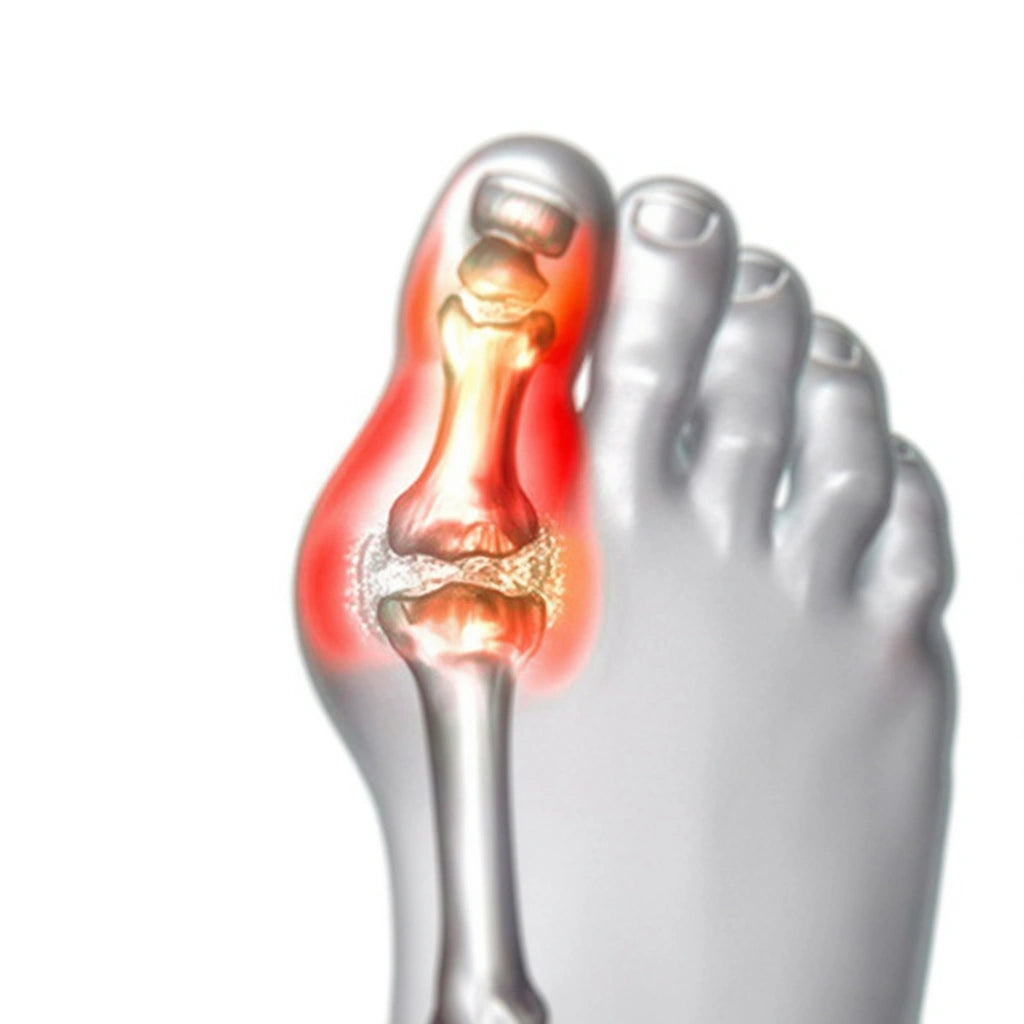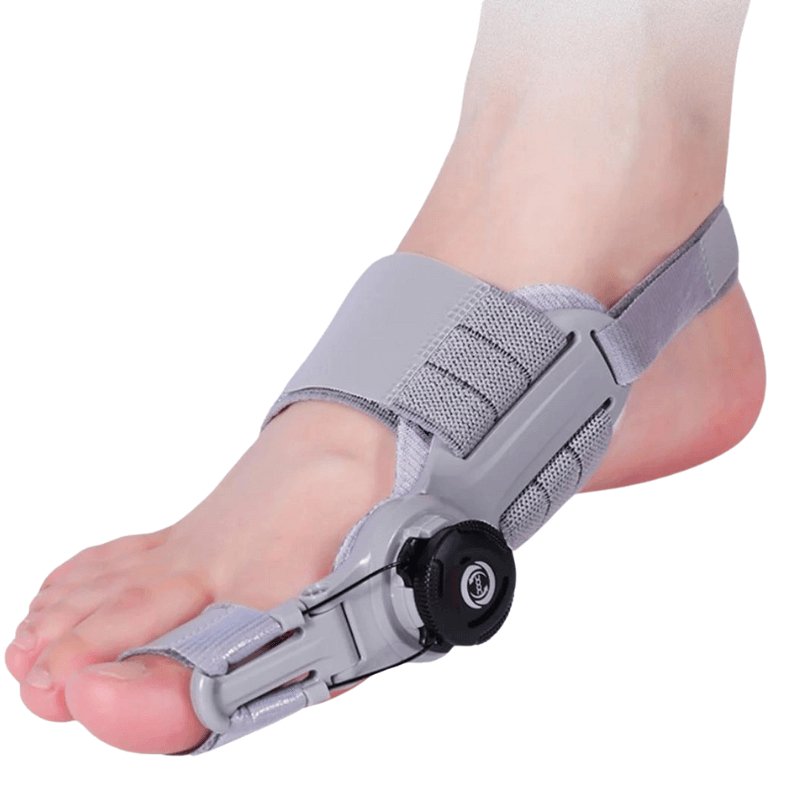Hallux Rigidus: Symptoms, Causes, and Treatment

Hallux rigidus, also known as bunion, is a form of osteoarthritis that affects the joint at the base of the big toe. This article reviews the most common symptoms, causes, and treatment options for hallux rigidus.
Background and symptoms: What is hallux rigidus?
Hallux rigidus is a degenerative disease that affects the base joint of the big toe, leading to stiffness and limited mobility. It is a form of osteoarthritis that gradually worsens over time if left untreated. The condition is characterized by changes in the function and structure of the big toe joint and is one of the most common diseases affecting the foot. Unlike hallux valgus, where the big toe points inward, hallux rigidus is primarily about stiffness and reduced mobility.
Sick leave and self-care: Symptoms of hallux rigidus
Common symptoms include:
- Stiffness and pain in the base of the big toe
- Difficulty bending the big toe up or down
- Swelling and inflammation around the joint
- Pain when walking, especially when pushing off with the toe
- Development of bone spurs (osteophytes) on the top of the joint
The condition can in many cases lead to discomfort when carrying weight, especially when walking in regular shoes. Hallux rigidus images from X-ray examinations often show changes in the joint surface and bone deposits as a result of the disease. Relatedly, hallux valgus can also occur, but the symptoms are clearly different.
Investigation and level of care: Causes of hallux rigidus
Several factors can contribute to the development of hallux rigidus:
- Overuse of the big toe joint
- Previous injuries or trauma to the big toe
- Genetic factors that affect the structure of the foot
- Certain types of inflammatory arthritis
- Foot deformities, such as flat feet or high arches
The diagnosis is primarily based on a clinical examination, but for a correct assessment, the doctor often needs to take X-rays to see the degree of joint change. Prolonged and repeated strain can lead to the condition worsening over time. To understand similar strain-related foot problems, see also overloading of the foot .
Diagnosis and treatment of hallux rigidus
Hallux rigidus is a condition characterized by stiffness and pain in the metatarsal joint of the big toe. The condition is caused by osteoarthritis-like changes in which the cartilage in the joint breaks down, leading to reduced mobility and discomfort when walking. Early diagnosis and appropriate treatment can help reduce symptoms and delay the progression of the disease.
Physical examination
Diagnosis begins with a clinical examination in which the doctor assesses the mobility, swelling, and pain of the big toe joint. The aim is to determine the degree of stiffness and rule out other causes of the pain. Treatment is often initiated with anti-inflammatory medications to reduce inflammation and relieve pain.
X-ray examination
An X-ray is used to assess changes in the bone and articular cartilage. The X-ray shows how much the joint has been affected and can guide the choice of treatment. Physiotherapy and stretching can help maintain mobility and reduce stiffness in the toe.
Magnetic camera (if necessary)
In more advanced cases, MRI can be used to examine the soft tissues and cartilage in detail. If structural changes are found, orthopedic shoes or special inserts may be recommended to relieve the joint and improve the function of the foot.
Gait analysis
A gait analysis is used to assess how the big toe is loaded during walking. If necessary, taping or stabilizing the toe may be used as part of the treatment. This can provide better support and reduce pain during daily activities.

Hallux rigidus and Toe Comfort™: Effective adjustment and treatment
ToeComfort™ from Komforten offers several benefits for people with hallux rigidus:
- Applies advanced adjustment therapy to gradually improve the position of the big toe
- Helps reduce inflammation and pain in the big toe joint
- Can be used regularly to maintain joint mobility
- Non-invasive alternative that can complement other treatment methods
- Adjustable design to accommodate different foot sizes and degrees of hallux rigidus
Hallux rigidus training and hallux rigidus exercises are important parts of treatment and can be combined with the use of ToeComfort™ for optimal pain relief and improved function. For more examples of similar aids, see alsopain under the foot .
Buy nowConclusion: Summary and continued care
Hallux rigidus is a progressive condition that can cause significant pain and disability if left untreated. By combining medical treatment, lifestyle changes, and the use of supportive devices such as the ToeComfort™, many people can effectively manage their symptoms and improve the function of their big toe. It is important to consult a doctor or podiatrist for a proper diagnosis and individualized treatment plan. Another related condition that is sometimes confused is gout of the foot .
Frequently Asked Questions (FAQ)
Can hallux rigidus be completely cured?
Although hallux rigidus cannot be completely cured, the symptoms can often be managed effectively with the right treatment and aids.
How long should I use Toe Comfort™ daily?
It is recommended to use ToeComfort™ for 30 minutes daily, but consult a podiatrist for personalized recommendations.
Can taping the big toe help with hallux rigidus?
Can taping the big toe help with hallux rigidus?
Is surgery necessary for hallux rigidus?
Surgery is usually considered only in severe cases where conservative treatment has not provided sufficient relief.
Can I still exercise with hallux rigidus?
Yes, but it is important to choose low-impact activities and wear appropriate footwear. Consult a physiotherapist for customized exercise recommendations. It is also important not to confuse the symptoms with a bunion .

